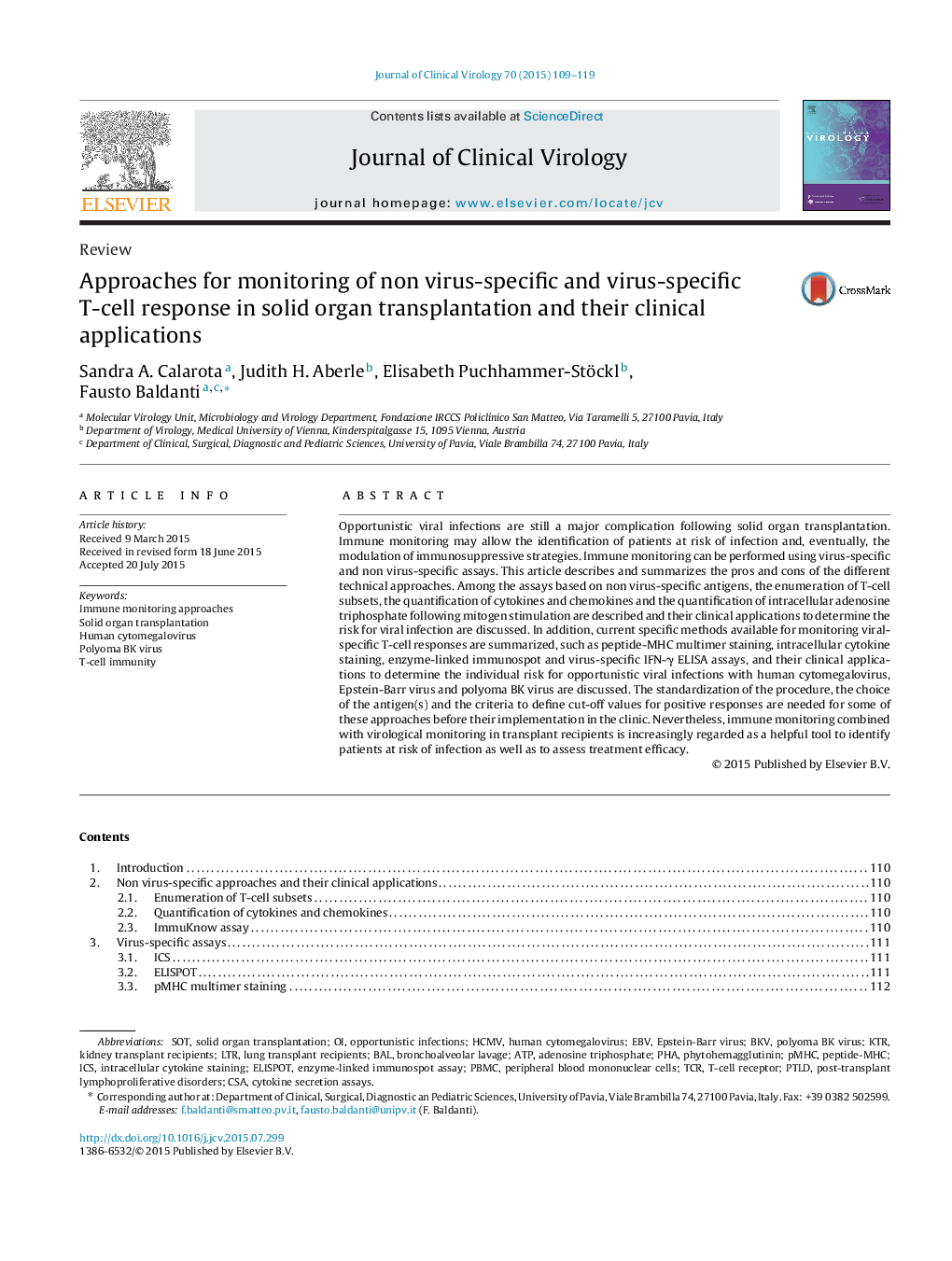| Article ID | Journal | Published Year | Pages | File Type |
|---|---|---|---|---|
| 6119818 | Journal of Clinical Virology | 2015 | 11 Pages |
Abstract
Opportunistic viral infections are still a major complication following solid organ transplantation. Immune monitoring may allow the identification of patients at risk of infection and, eventually, the modulation of immunosuppressive strategies. Immune monitoring can be performed using virus-specific and non virus-specific assays. This article describes and summarizes the pros and cons of the different technical approaches. Among the assays based on non virus-specific antigens, the enumeration of T-cell subsets, the quantification of cytokines and chemokines and the quantification of intracellular adenosine triphosphate following mitogen stimulation are described and their clinical applications to determine the risk for viral infection are discussed. In addition, current specific methods available for monitoring viral-specific T-cell responses are summarized, such as peptide-MHC multimer staining, intracellular cytokine staining, enzyme-linked immunospot and virus-specific IFN-γ ELISA assays, and their clinical applications to determine the individual risk for opportunistic viral infections with human cytomegalovirus, Epstein-Barr virus and polyoma BK virus are discussed. The standardization of the procedure, the choice of the antigen(s) and the criteria to define cut-off values for positive responses are needed for some of these approaches before their implementation in the clinic. Nevertheless, immune monitoring combined with virological monitoring in transplant recipients is increasingly regarded as a helpful tool to identify patients at risk of infection as well as to assess treatment efficacy.
Keywords
KTRHCMVPTLDLTRELISPOTpMHCICSpeptide-MHCPolyoma BK virusBALPhytohemagglutininlung transplant recipientsTCrPHAPBMCAdenosine TriphosphateATPEnzyme-linked immunospot assayPost-transplant lymphoproliferative disordersSOTEBVCSAT-cell immunityBKVKidney transplant recipientsintracellular cytokine stainingperipheral blood mononuclear cellsHuman cytomegalovirusSolid organ transplantationOpportunistic infectionsbronchoalveolar lavageEpstein-Barr virusT-cell receptor
Related Topics
Life Sciences
Immunology and Microbiology
Applied Microbiology and Biotechnology
Authors
Sandra A. Calarota, Judith H. Aberle, Elisabeth Puchhammer-Stöckl, Fausto Baldanti,
